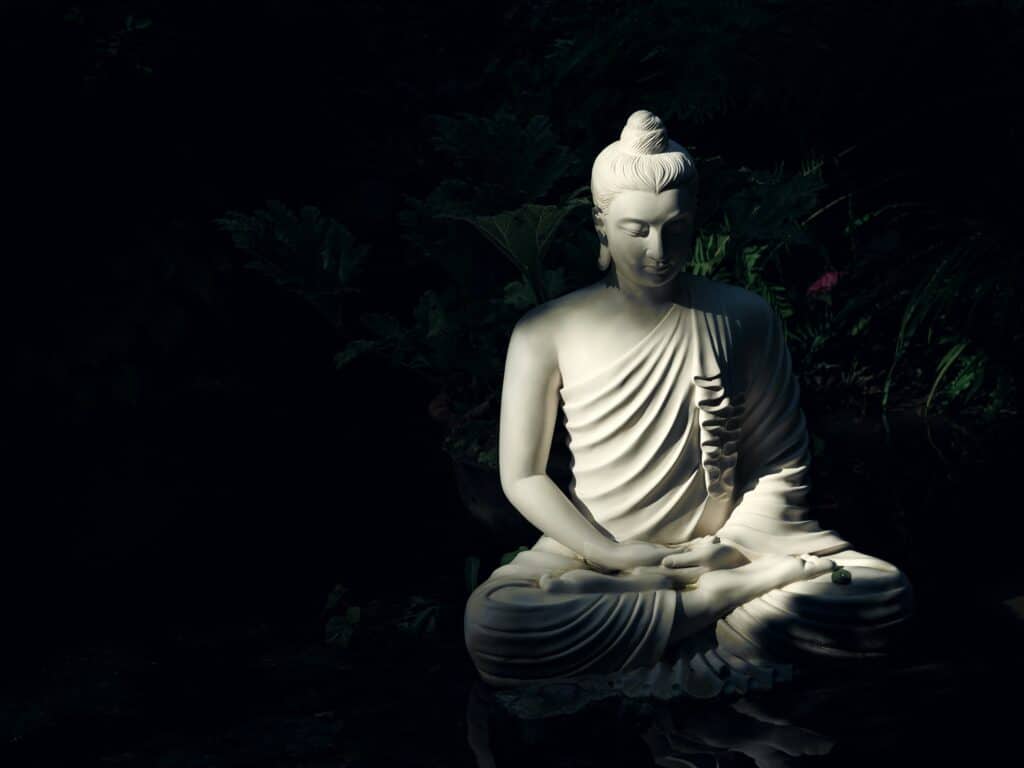Welcome to the Benefits of Mindfulness’ Mindfulness Made Easy blog post! Finding moments of peace and presence in our frantic world can seem challenging. However, mindfulness doesn’t need to be a daunting, or be seen as yet another obligation. It’s possible to infuse simple, mindful practices into our daily routines, transforming ordinary moments into ones of calm and awareness. This blog post is your ultimate guide, offering 100 practical ideas to seamlessly integrate mindfulness into your everyday life. Whether you’re a busy professional, parent, carer, student or all of the above these tips are designed to make mindfulness easy, accessible, and enjoyable.
Understanding Mindfulness
Mindfulness is the practice of being fully present in the moment, nonjudgmentally, aware of where we are and what is going on, without being reactive, overwhelmed or led into systemic thinking or autopilot thinking. Observing our thoughts and feelings without judging them as good or bad is a simple way to summarise what mindfulness made easy looks like. Mindfulness is a practice that transcends traditions, cultures and religions, so there is an access point for everyone.
Why Practice Mindfulness Meditation?
Practicing mindfulness has numerous benefits. It helps reduce stress, improves mental clarity, enhances emotional intelligence, and promotes a deeper understanding of oneself. It’s a tool that can bring significant improvements to your overall well-being. To understand more about these benefits, explore the scientific research at our blog, including for example our post on the scientific research on mindfulness. You can also take a listen to this fantastic podcast episode which goes into great detail around the key benefits of a regular practice.
Starting Your Journey
Mindfulness Made Easy is about finding simplicity in the practice of mindfulness. It’s the art of being present in whatever you’re doing, whether you’re eating, walking, or even waiting in line. This approach allows you to turn everyday actions into moments of mindfulness.
Below are some initial steps to begin your journey with a Mindfulness Made Easy approach:
Mindfulness Made Easy: Start Small – Begin with just a few minutes a day. Allocate a specific time, like during your morning routine, to practice mindfulness. Remember, consistency is key.
Mindfulness Made Easy: Focus on Your Breath – Breathing is a simple yet powerful way to anchor yourself in the present moment. Pay attention to the sensation of air entering and leaving your nostrils, or the rise and fall of your chest.
Mindfulness Made Easy: Acknowledge Your Thoughts – As you practice, thoughts will inevitably arise. Acknowledge them without judgment and gently bring your focus back to your breath. This process is normal and part of the learning curve.
Mindfulness Made Easy: Use Everyday Activities – Mindfulness isn’t limited to meditation. You can practice it during everyday activities like eating, walking, or even washing dishes. The key is to stay fully engaged in the task at hand. For more ideas, check out this post on incorporating mindfulness into daily life.
Mindfulness Made Easy: Be Patient with Yourself – Like any skill, mindfulness takes time to develop. Be patient and kind to yourself as you navigate this journey and try not to give into the temptation to ‘overdo it’. Little and often is much better than trying to squeeze in a long mindfulness session, which ultimately is counterintuitive.

Mindfulness Made Easy: 100 Ways to Incorporate Mindfulness
Below is our Mindfulness Made Easy list, 100 ways to incorporate mindfulness into your daily life. Remember these are suggestions, and ever person is different, so be sure to experiment and adapt this according to you needs and preferences. One of the best top tips is to engage with mindfulness in a ‘little and often’ way not to feel overwhelmed or like it is another thing you have to factor into your routine:
- Start your day with a deep breath and a moment of gratitude.
- Savour your morning coffee, noticing its aroma, taste, and warmth.
- During your morning shower, pay attention to the sensation of water on your skin.
- Practice mindful eating by chewing slowly and appreciating each bite.
- Take a five-minute break to focus on your breath.
- Observe the sky or a tree outside your window for a few moments.
- Listen attentively to someone without planning your response.
- While waiting in line, notice your surroundings and your internal state.
- Do a single-task focus, like writing an email without multitasking.
- Notice the sensation of your feet touching the ground as you walk.
- Take a short walk and observe the sights and sounds around you.
- Practice gratitude by listing three things you’re thankful for.
- Pause and feel the sun or breeze on your face for a moment.
- Engage in a hobby and immerse yourself fully in the activity.
- Observe your thoughts without judgment during a quiet moment.
- Do a body scan, noticing sensations in different parts of your body.
- Eat a meal in silence, focusing entirely on the experience.
- Spend a moment appreciating a piece of art or music.
- Notice the texture and taste of a single piece of fruit.
- Before starting your car, take three deep, mindful breaths.
- Clean a part of your home with full attention and presence.
- Reflect on your day’s high point before going to bed.
- Practice gentle stretching while focusing on your breath.
- Send a mindful, kind message to someone.
- Burn frankincense to signal the start of your mindfulness practice.
- While brushing your teeth, focus on the act and your senses.
- Observe a pet or an animal outside with curiosity.
- Notice the colours and shapes in your environment.
- Take a digital detox moment, away from screens and devices.
- Do a mini-meditation before an important meeting.
- Practice mindful listening during conversations.
- Notice the flavour and aroma of each sip of a drink.
- Apply fragrance oil to pulse points as a pause cue.
- While waiting, observe your thoughts and feelings.
- Focus on your breathing while in bed, before sleep.
- Practice smiling genuinely, noticing how it feels.
- Observe the sensations while washing your hands.
- Cook a meal with full attention to the process.
- Enjoy a quiet moment with a cup of tea.
- Place incense near your workspace to promote calm focus
- Take a moment to stretch and feel your body.
- Write down your thoughts in a journal.
- Practice saying no to unnecessary commitments.
- Observe the clouds or stars for a brief moment.
- Listen to a piece of music with full attention.
- Feel the texture of different objects around you.
- Take a mindful break from work or chores.
- Observe the natural rhythm of your sleep and wakefulness.
- Notice the sensation of clothing on your skin.
- Enjoy a moment of silence before starting your day.
- Mindfully organize a space in your home.
- Pay attention to your posture throughout the day.
- Notice the feeling of the air in your nostrils as you breathe.
- Acknowledge your emotions without judgment.
- Practice deep listening in a conversation.
- Burn resin before journaling to open introspective space.
- Observe the play of light and shadow around you.
- Pay attention to the sensation of typing or writing.
- Take a mindful approach to a routine task, like doing dishes.
- Pause and appreciate a work of art or nature.
- Notice the different textures in your meal.
- Sit quietly and observe sounds in your environment.
- Reflect on a positive memory with full sensory recall.
- Practice mindful compassion towards yourself.
- Notice the sensation of your breath on your lips.
- Be fully present during a hug or physical touch.
- Appreciate the beauty in everyday objects.
- Practice mindful breathing during a break.
- Focus on the sensation of water while drinking.
- Observe the play of emotions in yourself without reacting.
- Take a moment to appreciate a flower or plant.
- Notice the rhythm of your heartbeat in a quiet moment.
- Pay attention to the sensation of your feet while walking.
- Practice being patient in a situation that tests you.
- Focus on the present moment during a routine task.
- Observe the texture and colour of the food you eat.
- Notice the sensation of the breeze on your skin.
- Take a moment to appreciate the sunset or sunrise.
- Mindfully read a book, focusing on each word.
- Observe the aroma of your surroundings.
- Pay attention to the sensation of sitting or lying down.
- Practice mindful appreciation of someone’s effort.
- Notice the changes in light throughout the day.
- Focus on your breathing while waiting in traffic.
- Mindfully observe your reactions to news or social media.
- Enjoy the sensation of a warm bath or shower.
- Practice mindful gratitude before a meal.
- Pay attention to your hand movements during tasks.
- Observe the taste and texture of a piece of chocolate.
- Notice the sensations in your body during exercise.
- Take a moment to appreciate a piece of craftsmanship.
- Observe the details of a leaf or flower.
- Practice gentle, mindful breathing when stressed.
- Appreciate the quiet moments in your day.
- Notice the play of flavours in a complex dish.
- Observe the sensation of the air on your skin.
- Be fully present during a conversation.
- Practice mindfulness while waiting for an appointment.
- Observe the feeling of relaxation in your body.
- Take a mindful approach to reading news or emails.
- Appreciate the uniqueness of your daily experiences.
- Practice being present during a creative activity.
- Observe the nuances of your environment’s sounds.
- Reflect on your mindfulness journey each evening.
- Light a candle and focus on the flame for a few moments.
- Gently massage your hands or feet and observe the sensation.
- Place a drop of essential oil on your wrist and inhale mindfully.
- Focus on your breath while watching incense smoke curl and dissipate.
- Touch a natural object (stone, wood, leaf) and notice its texture and temperature.
- Slowly sip warm water, paying attention to how it feels in your body.
- Gaze softly at a single object, letting your mind settle.
- Practice mindful silence during part of your commute.
- Inhale the scent of fresh herbs or spices and observe your reaction.
- Let yourself fully experience a moment of joy or laughter.
- Listen to ambient nature sounds or white noise with intention.
- Walk barefoot and pay attention to how each step feels.
- Mindfully light and extinguish incense, noticing the shift in your environment.
- Set a mindful intention at the start of your day.
- Stand in a ray of sunlight and feel the warmth on your face or hands.
- Mindfully brush your hair or care for your body.
- Use a scent like frankincense to mark the end of your workday.
- Observe how your mood shifts with lighting — natural vs. artificial.
- Hold a warm mug in your hands and feel its weight and heat.
- Practice mindful noticing during transitions (home to work, work to rest).
- Take a mindful pause before sending a message or posting online.
- Spend time arranging your space with attention to sensory harmony.
- Sit quietly with a plant and observe its shape, colour, and structure.
- Gently rub resin between your fingers and observe the texture and scent.
- Listen to the silence between sounds.
- Walk slowly in your space, pausing every few steps to breathe.
- Let your gaze rest on a natural pattern (wood grain, clouds, stone).
- Sprinkle herbs or resins on charcoal and watch the slow transformation.
- Inhale deeply before you speak in a challenging conversation.
- Light incense to signal the start of journaling or evening reflection.
- Feel gratitude while handling objects that serve you daily (keys, kettle, shoes).
- Observe the changing scent of a room after lighting incense.
- Pause before eating to acknowledge the source of your food.
- Notice how different materials (linen, metal, ceramic) feel in your hands.
- Mindfully prepare a simple ritual — tea, prayer, writing — and honour it.
- Reflect on how scent influences your energy or mood.
- Sit with a stone, crystal, or bead and let it ground your thoughts.
- Practice a moment of stillness before entering a room or space.
- Observe your shadow as it changes throughout the day.
- Use scent to return to the present when feeling overwhelmed.
- Allow yourself to do absolutely nothing for one full minute.
- Let your breath sync with a rhythm in your environment — waves, breeze, birdsong.
- Observe the cycle of burning incense from start to ash.
- Close your eyes and focus on your sense of smell for one full breath.
- Give thanks to something often unnoticed — clean water, a doorknob, a streetlamp.
- Reflect on how mindfulness has shifted your relationship with time.
3 Bonus Tips: Common Challenges
- Finding Time:
One of the biggest hurdles people face with mindfulness is finding the time. The beauty of Mindfulness Made Easy is that it doesn’t require setting aside large chunks of your day. Instead, you can weave it into activities you’re already doing. For instance, use your daily commute as a time to practice mindful breathing or observing your surroundings without judgment. During your morning coffee, focus on the aroma, the warmth of the cup in your hands, and the taste of each sip. These small moments can become powerful mindfulness practices. - Dealing with Distractions:
Distractions are a natural part of life, and the mindfulness journey isn’t about eliminating them, but rather learning how to handle them. When you notice your mind wandering during a mindfulness practice, acknowledge this without self-criticism. Gently guide your focus back to the present moment, whether that’s your breath, the sensations in your body, or the task at hand. This process of noticing and returning is where the real mindfulness practice lies. Each time you do this, you strengthen your ability to remain present and focused. - Staying Consistent:
Consistency is key in making mindfulness a part of your life, but it’s often easier said than done. To help with this, try setting reminders on your phone or computer. These can be simple prompts to pause and take a few mindful breaths or to check in with your senses. Another effective strategy is to pair up with a friend who is also interested in practicing mindfulness. This can create a sense of accountability and make the practice more enjoyable. You can share experiences, challenges, and insights, which can be incredibly motivating and supportive. Remember, the goal is to make Mindfulness Made Easy a regular part of your daily life, fitting seamlessly into your routine.
Expanding Your Practice
As you become more acquainted with the basic practices of mindfulness, you might feel ready to deepen your experience. Here are some ways to expand your mindfulness practice:
Guided Meditation
- Benefits: Guided meditations are a fantastic tool for beginners. They offer structured guidance and can help you maintain focus, especially when your mind tends to wander.
- How to Start: Apps like Headspace or Calm are great resources. They offer a variety of guided sessions, from short, five-minute meditations to longer sessions, catering to different needs like stress relief, sleep, or focus.
- Next Steps: As you grow more comfortable with guided meditations, try exploring different themes or instructors to find what resonates best with you. Many apps also offer progress tracking, which can be motivating.
Mindfulness Courses
- Benefits: Enrolling in a mindfulness course provides a structured and comprehensive way to learn. It can deepen your understanding of mindfulness principles and techniques.
- How to Start: Many online platforms offer mindfulness courses. These can range from enthusiast-level courses on sites like Coursera or Udemy to more informal, interactive classes on platforms like Skillshare, through to more formal accredited courses like Mindfulness Based Stress Reduction (MBSR) that have been rigorously, scientifically researched.
- Next Steps: As you progress, consider courses that focus on specific areas of interest, like mindfulness in the workplace or mindful parenting. Some courses even offer certifications, which can be beneficial if you’re considering teaching mindfulness.
Join a Community
- Benefits: Joining a mindfulness community can be incredibly supportive. It provides an opportunity to share experiences, gain insights, and stay motivated.
- How to Start: Look for online forums, social media groups, or local meetup groups dedicated to mindfulness. Platforms like meetup.com often have groups for mindfulness and meditation and you could also check out Benefits of Mindfulness social media platforms.
- Next Steps: Once you’re comfortable, actively participate in these communities. Share your experiences, ask questions, and perhaps even meet up for group meditations. Additionally, our Benefits of Mindfulness Get Started page offers a wealth of resources and suggestions.
Meditation and Mindfulness Made Easy – here is a short clip to finish on:
Mindfulness Made Easy Takeaways
Mindfulness doesn’t have to be complicated. By starting small, being patient, and consistently practicing, anyone can reap the benefits of this powerful practice. Remember, the journey of mindfulness is a personal one, and it’s about progress, not perfection. For further reading on how to make mindfulness a part of your everyday life, visit our Get Started page and explore more resources on our blog. Incorporating mindfulness into your life can transform your daily experiences, bringing a sense of peace and clarity. Start your journey today, and embrace the power of living in the now.




